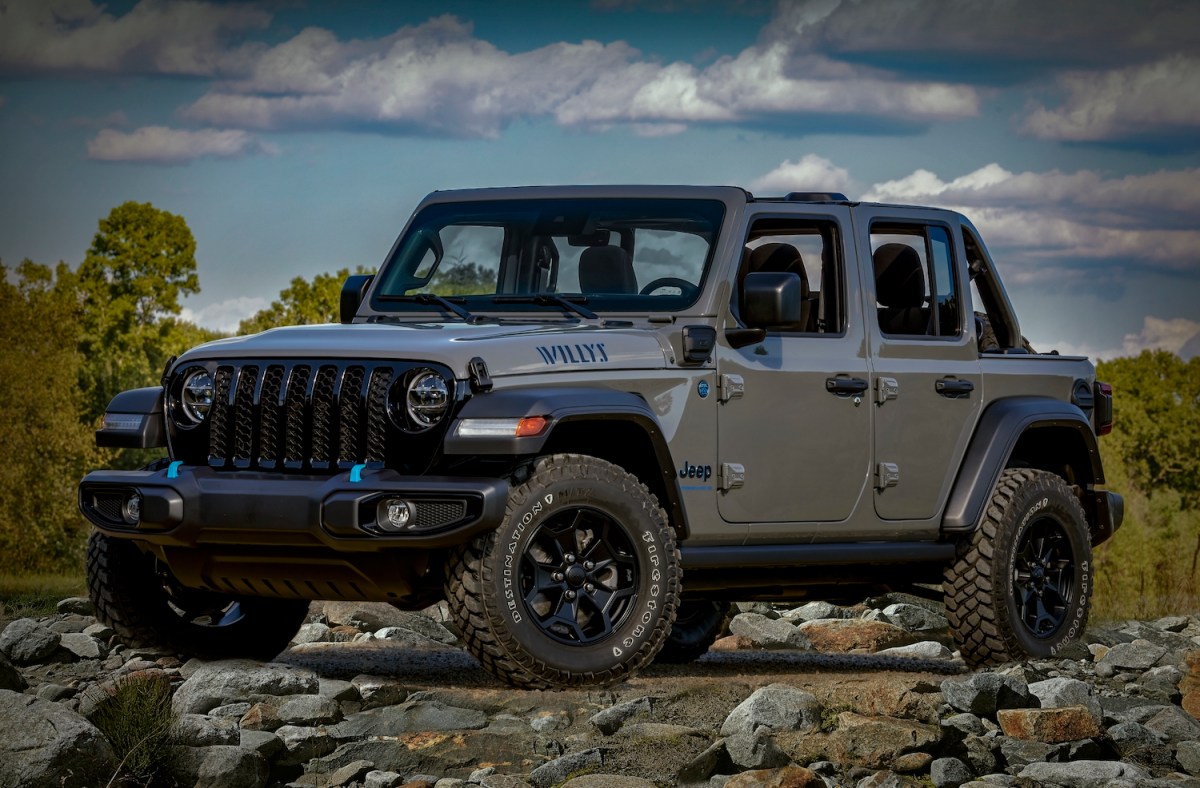
Is Jeep 4xe for Hybrids, Plug-in Hybrids (PHEVs) or Electric Vehicles (EVs)?
With a new 4xe lineup announced more than a year ago, Jeep’s U.S. consumers can now buy new “electrified” Grand Cherokee 4xe and Wrangler 4xe models. In the coming years, they will also be able to buy other electrified models like the Grand Wagoneer 4xe and Recon 4xe.
Consumers in Europe and China also have Jeep 4xe models designed especially for their markets. But what does 4xe mean exactly, given the different types of electric vehicles — hybrid electric vehicles (HEVs), plug-in electric vehicles (PHEVs), and full electric vehicles (EVs) — on the market?

The difference between HEVs, PHEVs, and EVs
To understand what Jeep 4xes are, it’s helpful to understand the types of different electric vehicles on the market.
First are HEVs, which include a traditional combustion engine (ICE), a motor system, and a battery. HEVs come in two types. In mild HEVs, the electric components support acceleration and stopping, as well as power internal systems like heating. In a full HEV, the electric components can power the vehicle when moving at slower speeds, while the ICE is used for higher speeds.
In some cases, the two systems work independently; in others, they work together to maximize power. In either a mild or full HEV, the vehicle’s operation charges the electrical components. However, in a PHEV, the electric motor and battery are charged using an external power source.
Autotrader distinguishes an EV from an HEV or a PHEV as a vehicle that lacks an ICE. In other words, a fully electric vehicle lacks a gas-powered engine and is powered solely by electricity.
Of the three types, EVs can travel the farthest (hundreds of miles) on electricity alone. PHEVs can typically travel a few dozen miles without the benefit of the ICE. All three typically achieve better fuel efficiency than pure ICE vehicles.
What are Jeep 4xes: HEV, PHEV, or EV?
Looking at the Jeep Wrangler 4xe and Grand Cherokee 4xe, you’ll see that these models are PHEVs. PHEVs are great options for consumers not quite ready to make the switch to full EVs, as well as those in areas without many public charging stations.
Both the Wrangler 4xe and Grand Cherokee 4xe combine the elements Jeep consumers know and love with a PHEV system. As per Edmunds, the Wrangler 4xe offers consumers 375 hp and 470 lb-ft of torque while sprinting from rest to 60 mph in just 6 seconds.
With a starting MSRP of $54,735, the Wrangler 4xe has an electric-only range of 49 miles and a total range of 370 miles. And each trim offers different exterior styling, off-road features, and convenient cargo space.
Edmunds notes that the Grand Cherokee 4xe’s electric components include not one but two electric motors for improved performance and reduced emissions. Starting at $60,360, the Grand Cherokee’s powertrain produces 375 hp and 470 lb-ft of torque while providing up to 6,000 pounds of towing capacity.
While it provides just over half of the Wrangler 4xe’s electric-only range (25 miles), its driving range is 100 miles more than that of its corporate cousin.
Is the PHEV the heart of Jeep’s electrification plans?
Right now, Jeep is working hard to expand its PHEV offerings. 2022 saw the introduction of both the Wrangler 4xe and Grand Cherokee 4xe in the U.S., with two more models on the way. According to Top Electric SUVs, European consumers can buy the Wrangler 4xe, as well as a Jeep Renegade 4xe and Compass 4xe, overseas. And Jeep also launched the Jeep Commander (a PHEV) in 2019, though it was not branded as 4xe at the time.
While Jeep is investing a lot in the 4xe lineup, PHEVs aren’t all the company has in store. Eventually, Jeep will offer a full EV in every segment under the 4xe brand by 2025.
Given Jeep’s recent launch of new PHEV models and the new EV models coming in 2025, it’s unlikely the PHEVs will be phased out quickly, especially in the U.S., where EV adoption has been slower.
However, Jeep’s PHEV and EV launches are helping to position the company for a future in which most vehicles on the road are EVs rather than ICEs. And that day may not be too far off, given growing consumer demand, regulatory changes, and the broader auto industry’s shift toward EV manufacturing.


